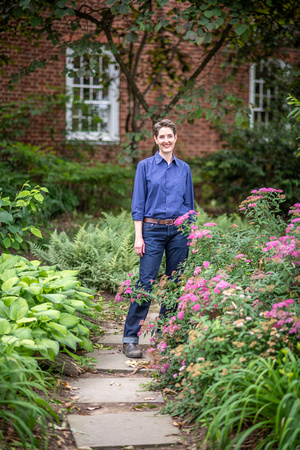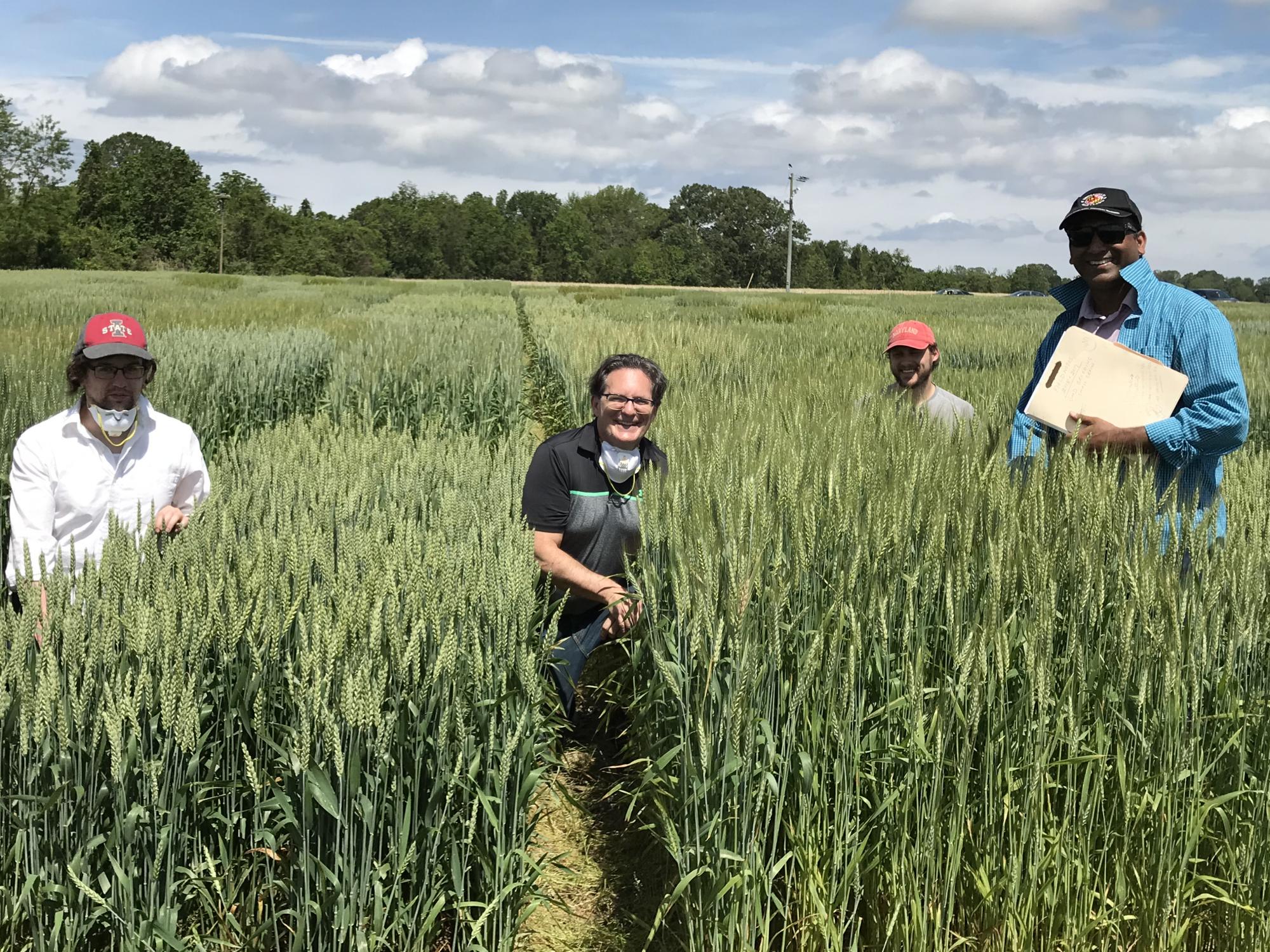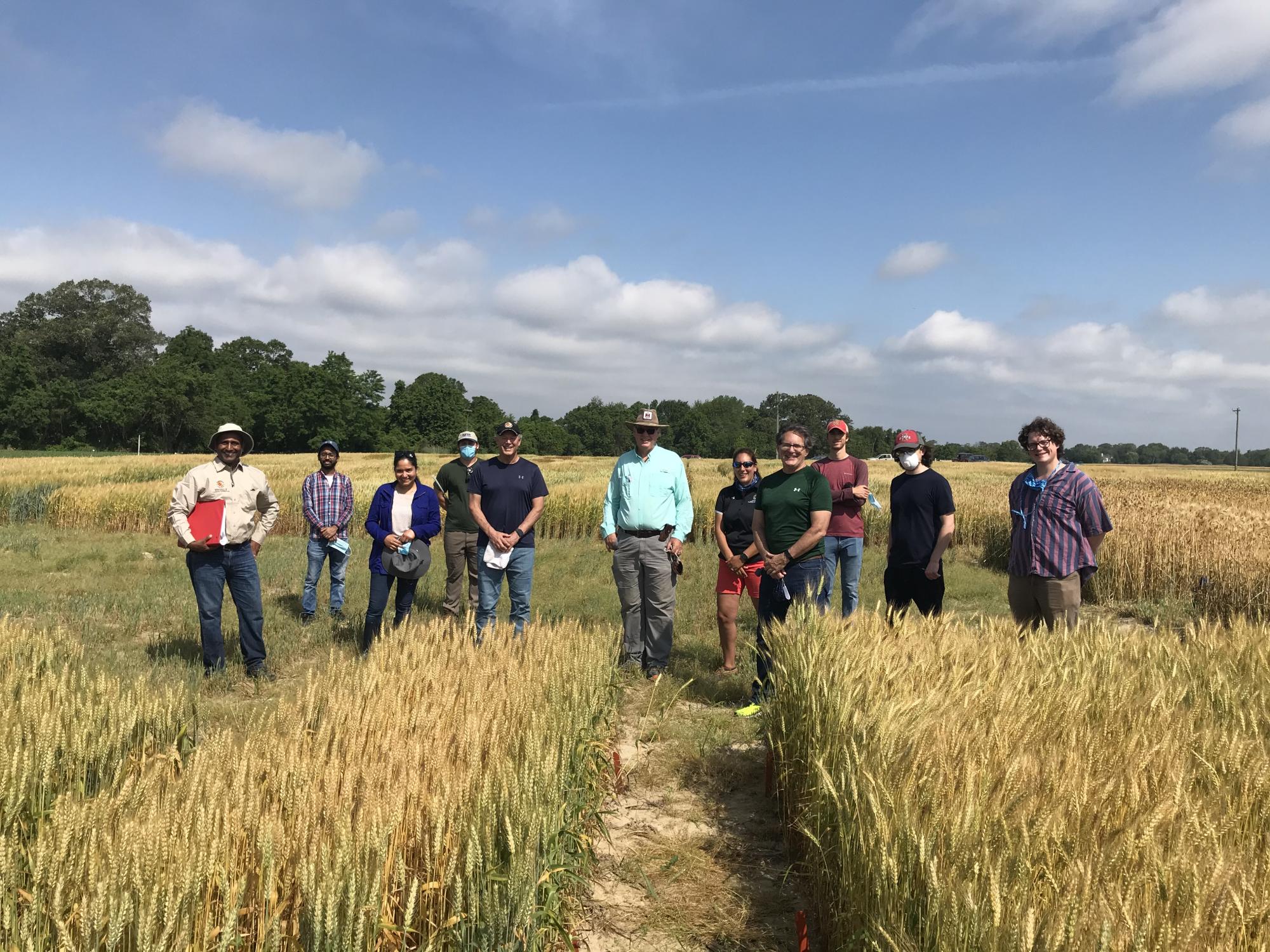In mid June of 2020, I had the privilege of sitting down with new PSLA faculty professors Naomi Sachs, Diana Cochran, Macarena Farcuh, and Vijay Tiwari. The hour I conversed with each of them could have easily gone longer, as they shared profound views and stories on family, nature, how research and academia chose them; the struggles and blessings of the pandemic, social justice protests, and their commitment to diversity in PSLA.
Naomi Sachs Interview
Dr. Naomi Sachs, Assistant Professor, Landscape Architecture Program; Author; Co-editor of Health Environments Research & Design Journal (HERD)
Social media: @nsintx; @healinglandscapes
In my 15 years as a higher education professional, I have gotten to know and study under some phenomenal women in academia-sociologists, neuroscientists, educators, many who have mentored and shaped my ambition, and have helped me realize my potential in academia. Dr. Sachs reminds me of one of those phenoms-that if you have been in her presence, it makes you a little better, something that students will have the privilege of finding out in depth. Hearing her story reminds me of the famous bible passage “All things work together for the good of those who love and are called according to his purpose,” as her experiences worked together in such a way to prepare her for her career as a landscape architect designing healing gardens and therapeutic landscapes.
Dr. Sachs is a native of Storrs, CT, (home of the UCONN Huskies). During our conversation, she lovingly referred to her hometown as “Snores” CT, as the town is very quiet, but a wonderful, woodsy place that she thrived in. Naomi is an only child and a fifth-generation academic. Discussing her roots, her parents are both college professors (now retired). Both of them graduated from Berkeley.
“I grew up seeing the best and worst of academia, and I really did not see myself pursuing it as a career. I tried to [run] the opposite direction.” However, Naomi could not run from the legacy, and in describing the road to becoming a Therapeutic Landscape Designer, this is truly evident.
As an undergraduate student, Naomi attended Brown University, majoring in Women’s Studies. She studied the work and writings of Bell Hooks and Angela Davis on Intersectionality (before the term was coined).
“My major allowed me to take a number of different types of courses…lots of courses… and allowed me to be intellectually engaged with social change in a meaningful way.” Naomi’s undergraduate thesis was Race, Class, and Gender in the Antirape Movement. Recollecting on her post-baccalaureate experiences, she jovially commented on the next step in her career.
“So with my liberal arts degree, I started working in a coffee shop.” During this time, Naomi explored her passion in photography, interning for a local nature photographer “digging holes and gardening,” and she discovered that she really enjoyed gardening. 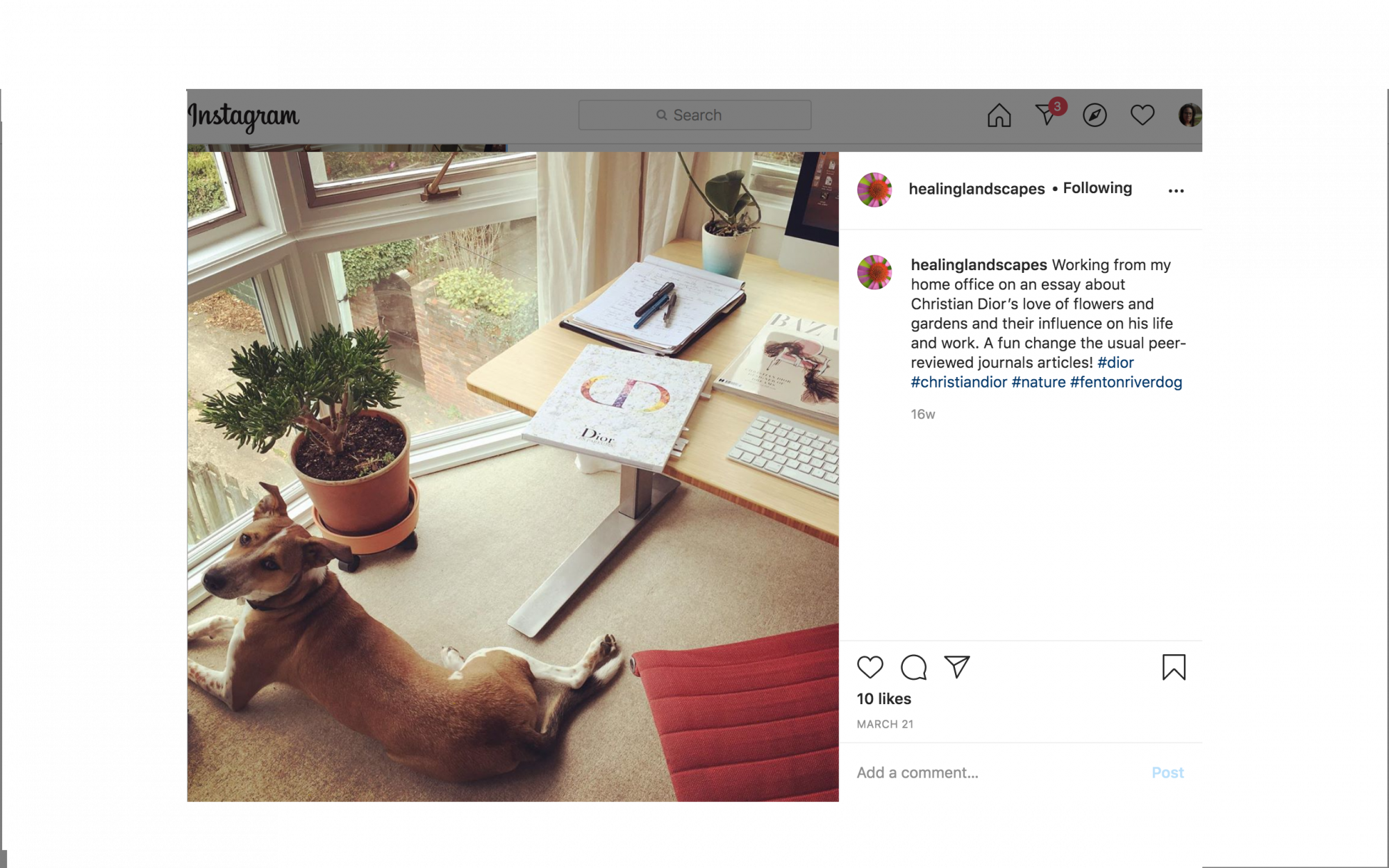
(photo credit: Naomi Sachs. In photo-Fenton River Dog)
“It was the one thing that calmed me, and something I would always return to.” Then, there was the fateful day where she came across a special issue of Landscape Architecture Magazine dedicated to healing gardens. Mind-blown while reading the publication, she exclaimed to herself, “Wait…I can do this as a profession?” From there, Naomi began taking LA courses, and later pursued her MLA at the alma mater of her parents- Berkeley- choosing that institution to study with Dr. Clare Cooper Marcus (the pioneer of Evidence Based Design and healing gardens design). Naomi pursued her PhD at University of Texas A&M, and completed her post-doctoral studies at Cornell. In 2013, she and Dr. Cooper co-authored Therapeutic Landscapes, a comprehensive and authoritative guide providing an overview of evidence-based design, planning methods, and post-evaluations of healing gardens and therapeutic landscapes.
“There’s something about [the land grant institution] not just being this ivory tower, but it being connected to the state and all of the communities in that state- which I think is really powerful”
The majority of Naomi’s educational career has taken place within land grant institutions. Her decision to teach at UMD was guided by her experiences.
“UCONN is a land grant institution, Berkeley is, and Texas A&M. There’s something about [the land grant institution] not just being this ivory tower, but it being connected to the state and all of the communities in that state which I think is really powerful. It’s easy for academics to stay in a bubble. Being at a land grant institution-a big part [of it]-is being able to go out into the community and not only tell them what they need, but listen. It can be a much more reciprocal relationship with the whole state.” Regarding Naomi’s extension efforts, she is collaborating with the faculty from the School of Public Health and the Master Gardener Program.
“With my own research, I’m actually working with someone in public health on a master gardener survey to determine gardening habits during Covid-19. I love it that the person who started [the survey] is in public health...it’s a great marriage of disciplines. It would be very different if we didn’t have that land grant connection.”
Naomi’s research is multidisciplinary-combining landscape architecture, environmental research to design accessible, prescribed natural spaces for overall health.
“The problem I’ve been focusing on for the past 15 years is access to nature in health care facilities for patients, and their loved ones and visitors, and for staff who are sometimes there for 24-hour shifts and are under incredible pressure with a huge burnout rate. Now with Covid-19, we see how much. If you don’t have healthy employees, the sick people aren’t going to get better.”
“The connection with nature is very critical. I think there have been improvements in the health care sector of providing access to nature, and there has been more adoption of it being a more important part of the environment of care.” Though there is the case, improvement in design and further accountability is critical in development of green spaces in healthcare facilities. Beyond these issues, Naomi is investigating how nature is restorative, and what types of spaces are best for various populations.
In terms of environmental justice issues, Naomi is working to level the playing field, examining social factors in green space accessibility.
“There are social determinants of health. For example, green space. There’s a movement to create a park within 10 walking minutes of every person. We know that the poorer a community is, the less access they have to available green space.” Creating safe and accessible green space for everyone is a problem Naomi works to solve.
Naomi has been at UMD for almost a year. In 2019, PSLA had a faculty opening. Jack Sullivan, encouraged her to apply for the position.
“He invited me to give a talk about Healing Landscapes through the PALS Program. We had met a few years ago at a conference where he was presenting about the Greenroad Project at the NICoE Building with Fred Foote. Around this time, another LARC Program faculty member was resigning from her position in PSLA, and Jack encouraged me to apply to the position. I wasn’t ready at this time because I was still a postdoc at Cornell, but I went ahead and applied. When I visited UMD, I was struck by a few things. I really liked the idea of being near Washington, DC [because of] my growing interest in environmental justice and politics. I was already working with Park rX America. The campus is beautiful, the research in LARC is interesting and people are just so nice. Some of [my decision was intellectual], but then you have this intuition. I could tell it was going to be a feeling of comradery, respect, and intellectual discourse. ” In today’s pandemic atmosphere, Naomi misses being physically in the office because it allows for her to interact with Plant Science faculty researchers.
“Plant Science [researchers] understand research in a way that we don’t. So that’s been really exciting to learn about.”
As a Therapeutic Landscape Architect, researcher, and a lover of nature, pursuing change in a meaningful way is the underlying theme still driving Naomi’s vision in the three land-grant pillars of research, teaching, and extension.
During Covid-19, staying in and avoiding the hospitals has been important for Naomi. During this past semester, she fell twice in early December, and had very unpleasant experiences. She had to be rushed to a local hospital in DC. The disparities she witnessed were eye opening.
“I got a chance to see how screwed up our healthcare system is, [and] the economic disparity and how much some healthcare facilities have to treat patients compared to a community hospital. I was living in DC, and because of where the ambulance took me, the nearest hospital served mostly brown and black people, a lot of people without health insurance. Experiencing this first hand really hit home, and I do not want to go to the hospital with Covid-19. I don’t want to be a burden on the system by getting sick and forcing someone to take care of me when someone else needs to be taken care of more. So I’ve been focusing on staying in and keeping my family healthy and staying out of everyone else’s environment.” Naomi expressed care for her students as well, as her main objective when teaching during the pandemic was (and continues to be) the health and safety of her students.
“My studio was mostly undergrads. Now that some of the country is opening back up, you hear some of the young [people] say, ‘Oh I’m going to get [Covid-19] and not even notice.’ I was really concerned for them and [them potentially spreading Covid-19 to their loved ones]. I felt like if I could get through this semester without them getting sick or dying, that was my goal. We did it! But it was a challenge.” As UMD will be offering hybrid and online courses for this upcoming semester, this summer, Naomi is working to improve the virtual design studio environment in a collective way.
“My summer job is figuring out how we can work to make the online learning experience better.” With a passion for teamwork, Naomi has organized a network of educators in Landscape Architecture and Architecture via her public Facebook group @designonlineped.
Photo from @designonlineped
The civil unrest due to the killings of Ahmaud Arbery, Breonna Taylor, and George Floyd in the US has taken a toll on our nation. Naomi discusses her views.
“With Ahmaud Aubrey...it’s been incredibly saddening and incredibly angering. I did my undergraduate thesis [in the 90s]..We’re still here?’’ However, seeing the outcry across communities has provided some hope for Naomi.
“The one thing I have hope for is there have been protests all over the world... It seems like the groundswell was even stronger this time, and it was more diverse. It’s not just black and brown people fighting and protesting for themselves. Many people from different races and ethnicities, and generations are fighting. How can we keep this going? I’m not sure.” As Naomi is holding firm with keeping her family from catching Covid-19, she has not attended any protests. She is, however, taking time to further educate herself on the issues, and finding ways that she can fight racial representation disparities within her professional organizations-amplifying black and brown voices on her social media outlets.
“I’ve been reading. I’ve been listening to a lot more radio and interviews. I registered on [a] website for getting people out to vote...we need a democratic election.” Naomi is aware that the Therapeutic Landscapes Network needs more racial representation as well.
“The Therapeutic Landscapes Network has not been very active, but the board is white and middle aged. I haven’t engaged the board, but we really need to diversify.”
“...I would really like for TLN to not just amplify through tweets, but engage these non-profit organizations and join with them in some way.”
On Naomi’s Twitter page, you will find interesting tweets and retweets from black and brown outdoor enthusiast initiatives from #OutdoorAfro, #Blackbirders week, #Melaninbasecamp, and #blackmenwhogarden.
“I posted about Black Birder’s week because of the whole incident with Christian Cooper in Central Park [on May 25, 2020].” Ironically, this incident preceded the death of George Floyd.
“The fact that people of color, especially black and brown people, can’t just go for a walk, can’t just go for a hike, a jog, just go birding, that is so upsetting. I guess there’s this mentality or belief [among white and black people] that black people don’t engage with the outdoors, and that’s just not true. There’s just this barrier.” However, it has been exciting to see established and smaller organizations disprove this falsehood in social media. Naomi hopes to not only amplify these organizations, but go a step further.
“Sometimes, it’s just one person who says, ‘Yes I’m out here, and I’m taking up space, and this is me.’ I would really like for TLN to not just amplify through tweets, but engage these non-profit organizations and join with them in some way. I haven’t figured out how to do that yet, but that’s one of my [projects] for the summer.” Naomi has ideas on ways diversity and inclusion can be improved in PSLA as well. Currently, PSLA is about 50% female and male students, but Naomi believes that better racial representation is necessary in our department.
"So the whole way through, we need to have a scaffolding to create a more diverse profession."
“I really appreciated the message that Dean Beyrouty sent out, as well as John Erwin that we need to have more representation and diversity in our [college and department]. We tried really hard in the last faculty search. Whether it’s through scholarship, or going more into the high schools and connecting with kids so that they are aware that Landscape Architecture exists as a profession-making the case for Landscape architecture, making the education more accessible and more affordable.” Naomi highlights the importance of mentorship, accessibility, and affordability of education being critical in the overall process of recruitment and retention.
“Little kids (K-12) look at their world, and they say, 'What’s available to me?’ I’ve heard from many architects and landscape architects who are non-white, and they shared that ‘it was one black landscape architect who came to my high school to talk about Landscape Architecture, a career A-I did not know existed-and B- I never thought to be a black landscape architect’... If you don’t have any of those people who are mentors or inspirers, it’s not going to be on that person’s radar.” But what happens after the student decides to join the program?
“Then [the student says], ‘Now I’m in the program, and there’s no one who looks like me; or, I’m in the program, and I’m working to pay for school; or now I’ve graduated, and where are the mentors I need so I can get the job that I need. So the whole way through, we need to have a scaffolding to create a more diverse profession. And I really mean racially diverse. We have done a great job gender wise, and with LGBTQ [inclusion], but we’re just too white, and that’s not helping anyone. Especially, if you’re talking about working with underserved communities. You have a bunch of white people going into those communities. Wouldn’t it be great if the people could also see people who look like them or go to the same churches as them, or the landscape architect goes into the Latinx community and can speak fluent spanish? I think that would be awesome.”
It indeed would be awesome, and with leaders such as Naomi, PSLA may be well on their way to increasing
their footprint in improving racial representation in plant science and landscape architectural fields. This takes a solid team to reach the goals and serve the needs of the community, and Naomi is enthusiastic about working with her teams in and outside of PSLA.
“I’m just so happy to be at a place where teamwork is encouraged!”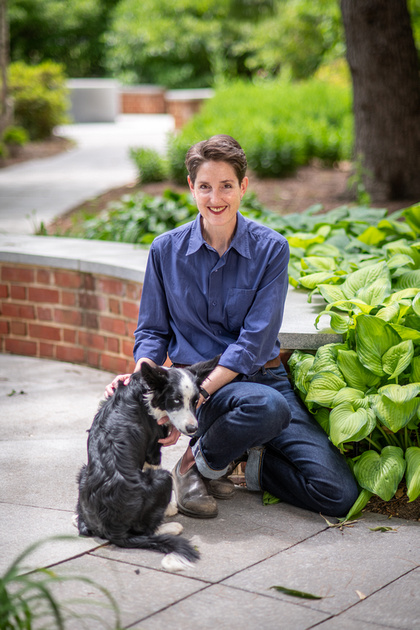
Diana Cochran Interview
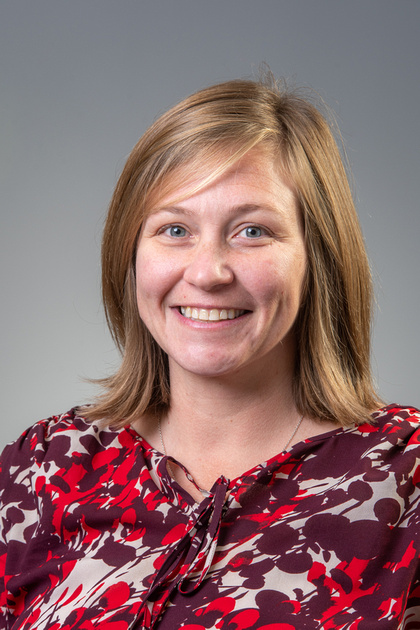
Assistant Clinical Professor, Agricultural Science and Technology Program
Faculty Advisor, UMD Horticulture Club
Diana Cochran will tell you that she has had experiences that have “reshaped and reset her” for the better. Igniting a passion for students, research, diversity and extension in horticulture that is wonderfully unique.
Diana grew up in Mobile, AL. She is an outdoor enthusiast. “I love water kayaking, serving the community by organizing river cleanups with kids, canoe days, and getting people outdoors.” Her genuine love for the outdoors lead her to a career in Horticulture, particularly bound for the state’s land-grant university.
“I decided to pursue a bachelor’s degree at Auburn University because it is the land-grant school in the state,” but initially, Diana was uncertain of the career path she would take.
“I did not know what I wanted to do career-wise. I just knew I loved the outdoors and plants…and I loved building the landscape. I got into horticulture as a landscape designer, and I loved the art behind it.” Landscape design offered Diana the instant gratification she craved. However, her inquisitive personality led her to horticultural research, generating her interest in growing and production. Additional motivation to pursue a career in academia came from her mother, who pursued her college career later in life while raising Diana; a professor and her mentor; and a seemingly unsuccessful turn of events during her first year in undergrad.
“I wasn’t the best student academically… I was a typical freshman. ” Diana admits, remarking on her poor study habits during this time. Her first-year academic progress resulted in her being asked to sit out a year…a reshaping experience of sorts-one to which many of us can probably relate. However, Dr. Joe Eaks (now at Colorado State University), who was one of her professors at Auburn, helped her turn things around. Dr. Eaks exhibited a belief in Diana’s potential as a student.
Ironically, “[Dr. Eaks’ class] ended up putting me out of [Auburn]” as Diana failed the class. She remembers going to Dr. Eaks in tears as she struggled through. However, after being reinstated to Auburn, Dr. Eaks began mentoring her and stirred her interest in research.
“He also gave me a stronger sense of appreciation for academia, and fostered a research environment that was family oriented and inviting.” Creating an inviting environment is a trait evident in Diana’s interactions with her own students, and she keeps her door open to them.
“One of the reasons why my door is always open is because I am naturally shy.” Diana admits her shyness would often keep her from knocking on the closed doors of professors when she was in school, and she knows there are students who are like her.
“I always tell my students that [professors] are there for [them]. Not every professor will be as caring as the next, but most of the time, [they’re] going to find a connection with [their] professor. [Professors] are there for you, and are not there to humiliate you or make you feel bad.”
Diana expresses that her position in PSLA combines everything she loves, which is why she accepted her position at UMD.
“I love the diversity of the [DC Metro area], the diversity in the department, and that I am able to teach the areas of horticulture that I love the most.” During the Spring 2020 semester, Diana taught over 160 students in the Introduction to Horticulture and Environmental Horticulture courses, instructing on ornamental, fruit, and vegetable horticulture. After Covid-19 forced professors to transition to virtual education, Diana successfully pivoted to teaching these courses online. This experience was one that she felt “consumed” her, admitting to many nights without sleep and feeling concern for her students. However, this summer, she is taking time to focus on her research and extension-related activities.
Diana conducts research for the IR-4 Program, a program assisting growers by facilitating registrations of pesticides and biopesticides on specialty food crops (ir4project.org). Diana’s work focuses on phytotoxicity in plants, work she has conducted with the program since studying for her master’s degree. She conducts her research in Keedysville, MD. The extension efforts she and other researchers make in IR-4 serve to educate the herbicide industry and the growers. Additionally, with such a diverse horticultural research background, Diana looks forward to collaborating with colleagues in PSLA.
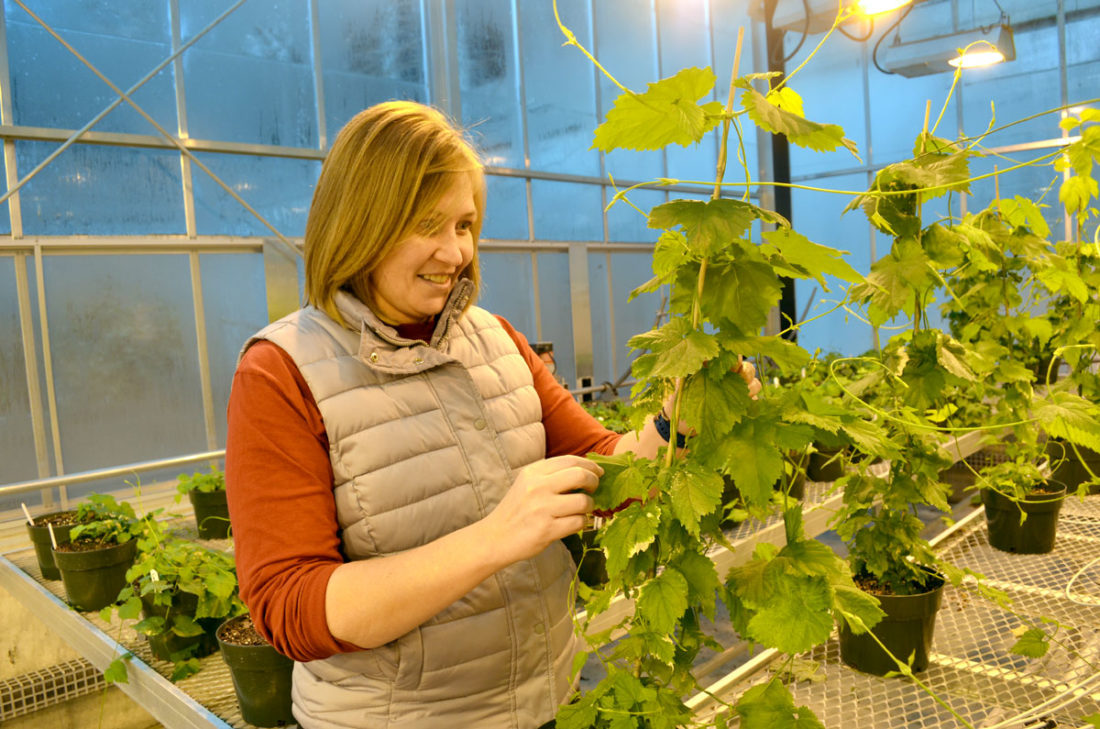
“I’m still figuring it out, but because I worked with hops prior to coming to UMD, I would like to work with Bryan Butler, and also Macarena Farcuh, as she works with fruit.” Diana’s research covers ornamentals, fruits, and vegetables; and as Diana has grown in her career, the motive fueling her research has developed to more than just obtaining her degrees.
“Sometimes you get so involved [in pursuing the degree] that you forget the greater reason behind your research,” Diana remarks. But, “the ‘why’ behind my research clicked,” as Diana recollects the first time she presented her work to growers at a conference. Since that time, she has worked to fuse applied research with basic research to create practical horticultural approaches for growers and the environment. Her big “why”?-improvement of agricultural economics and efficiency for growers. Not only that, this UMD Horticulture Club advisor has recruitment goals for Environmental Horticulture in PSLA-goals that she hopes will receive national and global recognition.
“I would like to see the [environmental] horticulture program grow to numbers reminiscent of years past when programs would have 100-150 students or more.” But Diana says that her initial recruitment goals are more modest. “I’m hoping to initially grow enrollment by at least 40-50 students.” Quality and training of the next generation of students is of key importance for Dr. Cochran.
“I want people to see that we are producing top notch students and a new generation of horticultural professionals. I want people to say ‘Wow’, they’re doing something over there.’ They are producing horticulture professionals…that will carry horticulture.”
“When we go to national horticulture competitions, and meet with industry representatives, we want them to see UMD as a top institution to find horticulture professionals.”
“We live in an amazing area of the country…there’s a lot of opportunity for Horticulture students. It’s just a matter of putting them out there.” Creating a relevant program is an important aspect to Diana.
“We have to make changes within our own industry if we want to stay applicable. We have to change the way things are done in order to create an environment where students want to come, and create an opportunity that students can’t get outside of the classroom.” As the cost of education continues to rise, Diana believes that sustainability, working with other institutions, and online education are key to helping students achieve a degree in a cost-effective manner.
“Things are getting more expensive… I believe there are multiple ways to reach your academic goal. I’m not saying to remove the 4-year degree, but if we can, [we should] offer options for students to take courses to reach that goal.” Diana expresses interest in appealing to the seasoned learner, an interest that is synergistic with predicted trends in higher education regarding increased enrollment of older adults in colleges and universities.
“More than not, I have interacted with more growers that did not get a degree in horticulture, but found a passion for it later in life. Why? What are we not doing, or providing to show that there is a career to [the younger generations]. Until we can [answer that question], we need to at least help those that have found it as a career. We need to bring the program back to where it needs to be, and also support where it currently is.”
“The effects of Covid-19 and social unrest are bittersweet. The students count on internships over the summer. I understand students, and it hurts me to know that they don’t have jobs this summer.” At the same time, she remarks that the students are passionate, and hopefully, they are using their passion to participate in the social protests and change. “I can’t wait to get back to school and see what the students have used their passion for this summer.”
Diana herself has been using her passion by participating in the social protests that have occurred nationwide as a result of George Floyd’s murder. For her, this incident of police brutality woke her up.
“It motivated me to go protest. I’ve been out a couple times. I feel like I need to. I went down to Black Lives Matter Plaza, with my mask. I was not out in the middle of the crowd, but stayed on the perimeter.” Diana also participated in a protest at the White House.
“Every [protest] I’ve been to has been very family oriented…and filled with energy,”-an energy necessary for change. Diana described the atmosphere as peaceful
“Participants were handing out water and snacks and taking care of each other.” Diana hopes the energy continues.
“I hope the momentum doesn’t stop.” Diana also describes the protests as sad, and hopes that the children of today will not have to fight these types of racial injustices when they grow up. Diana believes that conversations about race and diversity are a large factor in change, especially at the University.
“I realized then that I was not helping the situation if I continued narratives with color at the forefront.”
As an educator, Diana describes herself as passionate about diversity and equity in academia. She is not afraid to have the necessary conversations. She recalls a conversation she had with a close friend, who added fuel to the fire of her awakening.
“I was 20 or 21. I remember telling a story to my friend, and in my description I mentioned ‘these black guys.’ My friend responded, ‘What does it matter to the story that the people were black?’ I responded that it didn’t, and I didn’t mean anything by it. But I never thought about it until that moment of conversing with her. These types of conversations must be had. My friend Jamie changed my outlook on things, and I realized then that I was not helping the situation if I continued narratives with color at the forefront.” Education is also key for Diana to effect authentic change and improve diversity and inclusion in PSLA.
“I’m not going to learn anything if I’m not taking the opportunity to educate myself. In my previous position, I volunteered to be on the diversity team, and I volunteered for the diversity committee that PSLA is starting. I want to be educated on topics, I want to learn, I want to listen. I want to show people that people can be decent human beings…The generations coming through will be a big change for a lot of people.” Diana also believes that for the passion to be seen within PSLA, open dialogue within our department is necessary, as the problem often resides with people who do not recognize the importance of diversity and inclusion.
“I know I need to be educated, but it’s the people that are not wanting to [get involved]. It’s those people you have to reach through open dialogue.”
Diana emphasizes that it is more than just looking at the amount of racial diversity within our department (the numbers). Rather, inclusion and providing opportunity for students to voice issues of concern are also key factors.
“It is one thing to look at the numbers of [underrepresented groups] within our department, but it’s another thing that people feel included and know that they matter. It’s a matter of listening to students.”
“We need to do more to vocalize [the students]. Take our class evaluations for example. If there is...a comment on a class evaluation where a student expresses not being included, then that needs to be addressed in faculty meetings because we need to know that this exists.” For Diana, it’s also about promoting diverse representation in academic leadership.
“Who are [our students] looking up? Looking at our department...and even thinking back to my previous institution…we do not have any professors who are Black.” Diana believes opportunity for PSLA to promote diversity in leadership can also be exhibited through the PSLA Seminar Series.
“I want to get to a point where color is not a defining characteristic. I know we have a long way to go…but I get passionate about what we can do. What can we do?” For Diana, changes of this magnitude begin with communication with the students.
“I think our department needs to have more interactions with the students. I’ve had students tell me that they have interacted more in this semester with me than any of their other professors within their 4 years of being [at UMD]. We need to start there…we need to ask questions…”Questions that Diana believes should be focused on concerns, worries about future careers, and issues in PSLA that may not be immediately apparent.
“We will not know unless we ask.”
“We don’t have to have 150 people… it only takes reaching one to make a difference. That one will go out and reach more people. The same is true for tackling our diversity initiatives…we can tackle one at a time or more than one.” Diana also realizes that when she trains students, awareness of culture and an understanding of an individual’s previous educational background and opportunities are crucial.
“I had a student that I hired for a summer. There were things she was struggling to grasp. She was African [and from Iowa], and I say this because…after I learned more [about her] I began to recognize that she may not have learned specific things because she was not given the opportunity.” Diana’s former student is now at NC State and doing very well. To Diana, this mentorship experience fortified the importance of treating students as individuals-allowing her to take things a step further by considering culture, heritage, and racial issues at play in a person’s experience.
For Diana, education and student-faculty communication are keys to strengthening PSLA, encouraging diversity and growing the Environmental Horticulture Program. Keeping in mind that
“Go TERPS, ” Diana says! She is committed to PSLA, AGNR, and beyond. We look forward to seeing how passionate educators such as Diana will elevate us.
Macarena Farcuh Interview
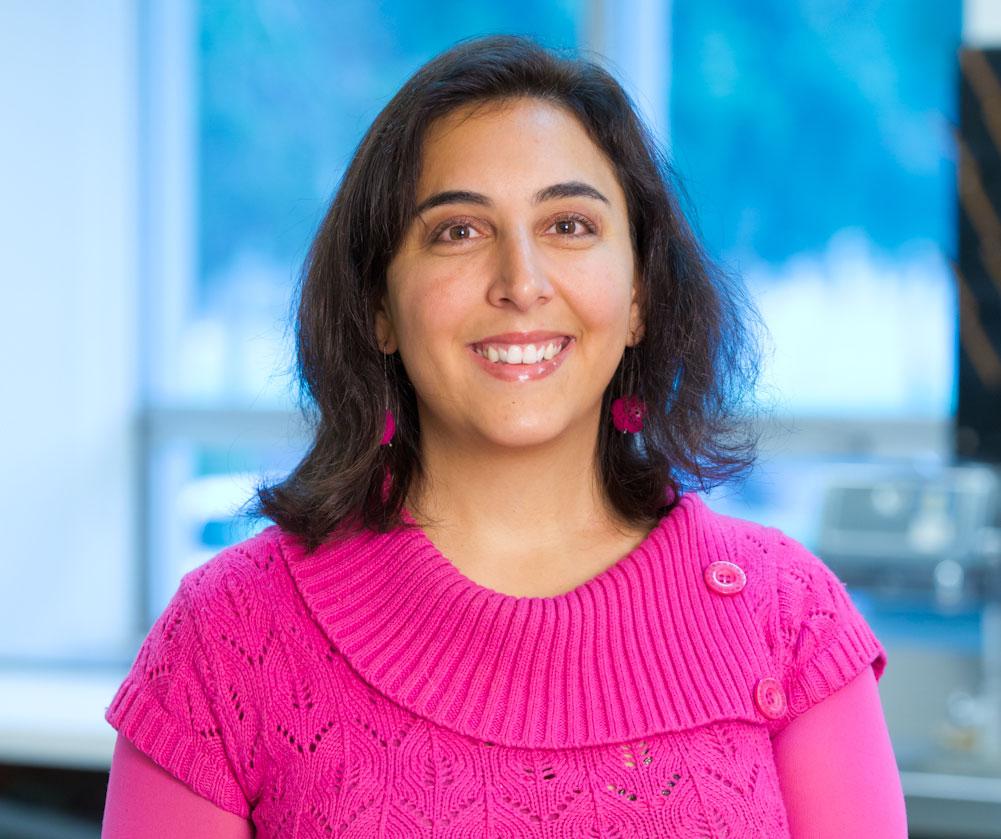
Assistant Professor, Fruit Quality/Biology Laboratory
mfarcuh@umd.edu
Twitter: @FarcuhMacarena
There is a strong sense of urgency when it comes to the elimination of food waste, and Macarena is driven by it. She works to solve this global issue through her research in fruit, focusing on the improvement of taste, and educating the industry participants on best practices for harvesting, storage, and transport. With multiple papers being ranked as number #1 downloads on Elsevier, it is apparent that Macarena’s research is timely, and relevant. The general public relates to her collaborative, interdisciplinary research, as you will find the food enthusiasts citing her research on food and cooking blogs such as Eat or Toss. If you ask Macarena if research was a known career pathway when she began pursuing higher education, she will tell you that she did not know this was what she wanted to do; but growing up in Chile influenced her decision early in her career.
“I didn’t really know [what I wanted to do], but where I grew up molded all of this. Chile, is a very important fruit producer and exporter [the largest in the Southern Hemisphere]. I could have worked with animals, but I was not [very] attracted to that. I really enjoy all of the colors and tastes that we can find [in fruit].” But beyond color, Macarena’s love for fruit allows her to solve a larger problem.
“About ⅓ of all the food in the world is wasted. I’m always trying to fight around this (particularly focusing on fruit).
“We’re always talking about how we should increase food/fruit production. And that is, of course, very important. But many times, we forget what happens after the fruit is produced...most of the waste happens after the fruit is harvested...” Thus, Macarena’s research focuses on three key components which she believes do not receive the necessary attention: harvest, distribution, and storage.
“Seeing so many problems in these areas has directed my research.” Another striking element of Macarena’s research is her work on taste and quality. According to Macarena, taste and waste have an inverse relationship.
“If [fruit] tastes better, it’s less likely to get wasted.”
“Many times I talk to people, and it has [been] my own experience, that you go to a grocery store, you see this perfect piece of fruit. You bring it home. You’re ready to eat it. You take a bite, and what happens? The [fruit] has no flavor, no juice, nothing. So, I want to re-enchant consumers into eating fruit.” Macarena believes that improving taste will improve the consumer experience, resulting in beneficial impacts on consumer health and quality of life, as well as invigorate the fruit production industry.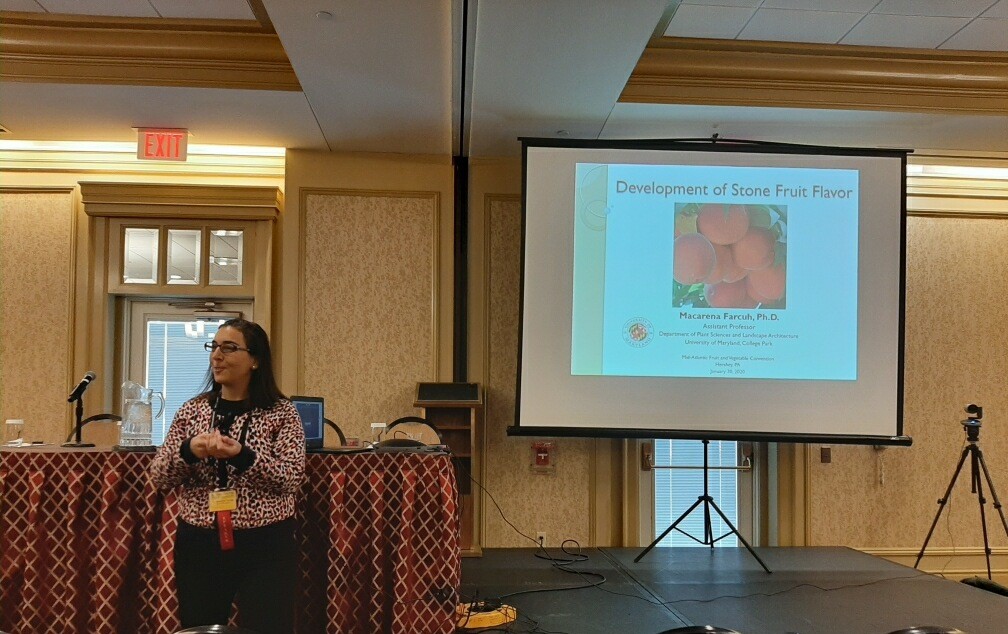
“There are a lot of things that can be improved, and that’s what’s so exciting in this area. I work so that [people] enjoy their eating experience.” Macarena’s research is in high demand. Remarking on her most downloaded articles on Elsevier, Macarena enthusiastically explains she was notified by colleagues in the science community.
“This was not something I was checking for ... The first time it was very funny because one of the reviewers of my paper shared [this news] with me...It’s nice to see that people are reading your work and it’s not just sitting there.”
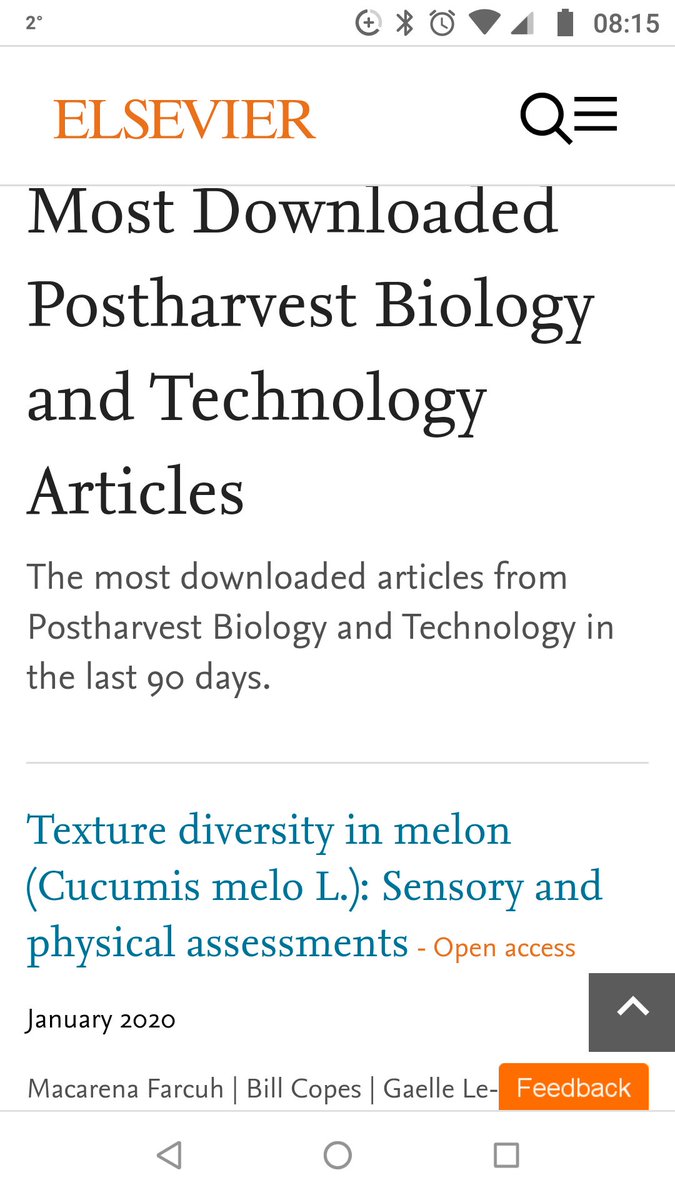
The paper titled Texture diversity in melon (Cucumis melo L.): Sensory and physical assessments, was published in 2019 in Postharvest Biology and Physiology. Macarena and her colleagues were hired to develop instruments to assess melon texture of melon genotypes to assist melon breeders.
“During my post-doc, I worked with a private melon breeding company. My role was working with many faculty from different areas at UC Davis [food science, physiology, breeding]. The objective was to try to identify key players in the metabolism that can help improve the flavor and texture of the melon so that they can develop tools to phenotype which melon lines have the best flavor for the consumers.” As with the peach industry, Macarena says developing and quickly testing flavor and texture is a challenge in the melon industry, and consumers and seed companies have complained. The study correlated phenotypic parameters with the taste perception of a sensory panel, which was a quicker method than what the company was previously doing. From this research, Macarena was able to generate a second paper, which will be focused on the tools to assess flavor. The paper will be published later this year.
“Hopefully, it will be published this year. But Covid-19 may delay it.” From affecting graduate student start dates, to the general schedule of lab research, the Covid-19 pandemic has made it stressful for Macarena, but she has been prioritizing.
“Being a first year professor and trying to set up a lab has been really challenging. I cannot grow in the greenhouse, and I have one shot in the year to get the fruit and do the research. I had to cut down many projects I had planned.” However, Macarena has shifted her plans, and remains optimistic during these times.
“I [focused on] my writing, took my breaks and relaxed. I’m thankful that I’m healthy and full of energy...life will continue.” Covid-19 has also affected the schedule of graduate student start dates in Macarena’s lab.
“I don’t have grad students, so there is much uncertainty.” Macarena had to defer the start date for an incoming PhD student, who is international.
“That was a setback, but hopefully she will be able to start in January 2021.” Though the struggles have been high during the pandemic, Macarena praises those in the department who have been supporting her with setting up her lab, particularly Facilities Manager Shaun Faulkner.
“I’ve had a lot of help from Shaun and coordinating with others in PSLA. [Our lab] will be ready to go next week to do at least two projects that I have planned.”
For Macarena, starting a lab is very similar to beginning a startup business. As a 2018 fellow of UC Davis’ Keller Program Pathway, a year long fellowship, Macarena was afforded key tools that shaped her business approaches to extension and research.
“That was a very integrative experience. I’m thankful to have done it towards the end of my PhD because I was already looking at things differently. None of the people were in my field of work. Mainly, the people who apply for the program are engineers and are in fields that go to industry and develop their startups. I applied because I always had this thought of trying to make research that can be applied.”
“The fellowship forced me to participate in a business competition. So I had to form a startup company that was related to my research. We had a team, we made it to the semifinals, and we were competing with startups from all over California. The process was a one year process, you had different workshops, you interacted with people from all different fields, you had to go through the different steps of how you would begin a startup from generating an idea to developing a pitch for the startup. It provided me good qualities that we as researchers should integrate in our backgrounds. One of the biggest things I learned is that networking is the most important thing.” The importance of networking is something Macarena plans to stress in her lab and her mentorship of students.
“You cannot be an expert in everything, so I’m always trying to reach out to other scientists to get their perspectives. Oftentimes, I can have a narrow view in my research, but when I talk to someone outside of my research field, it makes me think about things differently.” Macarena compares her lab to a startup.
“Seeing that it’s not so impossible to begin your startup. You just have to be passionate, and [be] convinced that there is a need it will solve a need...For me, having a lab and having your own startup are very similar. You have an idea, you form your team, you decide what you to do…[the program] was super helpful for me.”
“Diversity builds the richness not just in the lab, but everywhere”
Macarena, who has resided in the U.S. for 8 years, has a unique flavor regarding the diversity and inclusion issues in the US, and hopes to relate her experience to growing her lab from people from all over the world.
“I am part of this underrepresented group. I am international. I’m from Chile. I am a woman. I [was] a first generation graduate student in my family. I had to adapt to the culture here in the states.”
“My number one priority is that I want to have a lab that is as diverse as possible in terms of disciplines...and people from all over the world that enrich my lab with their experiences and points of view. Now it’s complicated because I’m restricted [by Covid-19].” However, Macarena looks forward to mentoring new students, and will be mentoring a student from UMES in the Louis Stokes Alliance for Minority Participation (LSAMP) Program-a bridge program, funded by NSF, designed to increase substantially the quantity and quality of minority students receiving baccalaureate degrees in STEM disciplines and, subsequently, to increase the number of minority students entering graduate school who obtain terminal degrees in STEM fields.
“She contacted me, and explained [LSAMP] to me. I did not know about [the program], but she will be joining the lab this summer.” Macarena expresses a vested, positive interest in creating a research environment that celebrates and accepts cultural differences, and also thrives on relationship and networking.
“I’m happy to bring all the diversity that I can, that can enrich my lab, because I feel that diversity builds richness not just in the University, but everywhere. My friends are everywhere. [Plus] when you travel all over the world, you have people that you can visit and stay with.” Her native country has also become more diverse since she has been in the states.
(in photo: Macarena and colleague Carolina Torres, WSU)
“Chile has become very diverse, and you see people from everywhere.” The most important experience she received while pursuing her PhD is that she interacted with people from all over the world-an experience she hopes to give to her students.
“Building relationships to help shape your perspective is the most valuable asset you can give to a student.”
Macarena is looking forward to ramping up her research with her lab group this year. She plans on developing a lab website to enable her to connect with fruit growers in the state and showcase the research.
“We are all like bears in a cage, ready to get the research done!”
The work and culture that Macarena brings to PSLA is definitely be a welcomed asset for the department’s growth in research, extension, and teaching.
Vijay Tiwari Interview
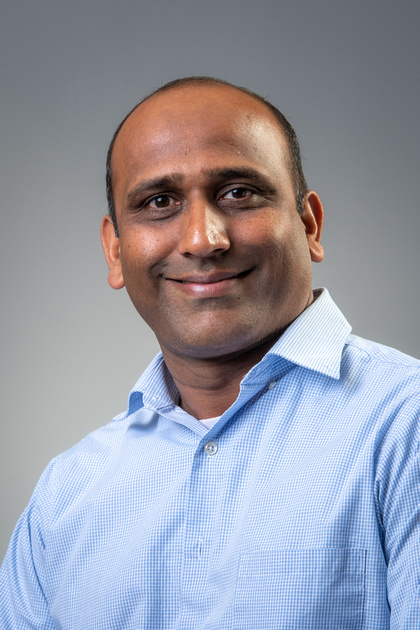
Assistant Professor; Head of Small Grains Genetics Program
How do you know when something is not right for you? For Vijay Tiwari, microbiologist turned geneticist, it took time to find the right fit. Born in Northern India, Vijay grew up in Varanasi, later moving to Saruki, India to go to college. His family works in agriculture, but he did not think this was his calling.
“My grandfather was a farmer, and we still do a lot of agriculture, but I was not thinking of going into agriculture at all. I [thought] about my field. I tried microbiology after my Master's degree, and worked in [this area] a few months, but I didn’t [enjoy] it.” Vijay then joined Indian Institute of Technology Roorkee for his PhD, but the research he was conducting initially was not a good fit for Vijay.
“I told my supervisor at the time, ‘I’m sorry. I do not feel fascinated by this research.’ But he had a collaboration with a faculty member named Dr. Dhaliwal.” Vijay began a lab rotation with Dr. Harachan Dhaliwal, who introduced Vijay to wheat breeding research. After working with him for a few months, Vijay realized this research was what he truly enjoyed.
“It was the beginning of 2005 when I [worked on] wheat for the first time, and it was a wild, ancestral plant, and then I never left [the research].” Dr. Dhaliwal is a continued source of inspiration and support to Vijay’s career. Vijay’s pursuits opened doors for him to conduct post-doctoral work at Oregon State University on an NSF-funded project on radiation hybrid (RH) based physical mapping of D-genome chromosomes of wheat. In 2012, Vijay began working with Bikram Gill at Kansas State University. Vijay lead research at the Wheat Genetics Resource Center.
Mentorship and networking provided Vijay the direction he needed to begin a career in wheat genomics. Now 15 years in, Vijay’s research objectives initially brought him to PSLA 2016 as a professional track faculty member. At that time, his role was to develop genomic tools for PSLA. In 2019, he was hired in the department as an assistant professor to lead the Small Grains and Genetics Program. He, his research partner and wife Dr. Nidhi Rawat, and their research team brought their programs (the Small Grains and the Fusarium Head Blight Research Program) to UMD. Prior to Vijay and Nidhi arriving at UMD, no programs such as these existed in the College. The word is spreading throughout the State of Maryland about the quality of the programs and the work of Vijay’s team.
(in photo: members of Tiwari/Rawat lab in the research field Dr. Erwin)
“One of the [external] company partners I spoke to yesterday thought that UMD did not have a small grain program, but in the last 1 to 2 years, he has heard a lot of good things about the program. That’s why he came to visit my field.” Vijay’s work has reinvigorated the small grains industry. Internal research collaborations of the Tiwari lab include several groups such as plant pathologists, physiologists, synthetic biologists and agronomists (inclusive of Yiping Qi, Maile Neel, Jinhua Zhu, Gary Coleman, Angus Murphy, and Nicole Fiorellino). Within the State of Maryland, the Small Grains Breeding Program works and consults with stakeholders such as the Maryland Crop Improvement Association, as well as the Maryland Grain Producer and Utilization Board.
(in photo: Tiwari/Rawat Team et al with Dean Beyrouty-dark blue shirt and Dr. Erwin in the research field)
The Small Grains Genetics Program works with regional breeders at Virginia Tech, as well as those across the nation, including Kansas State, Texas A&M, and Washington State University. Vijay continues to look forward to future extension efforts.
“I’m looking forward to serving needs through extension. We [will] create good cultivars, and plan field days and events.” These events will be used to inform stakeholders about his lab's work. The work extends beyond the states, as Vijay’s group conducts studies internationally. One way is through his membership in the International Wheat Genome Sequencing Consortium, a collection of 2,800 scientists across 70 countries. IWGSC’s efforts serve to produce high-quality wheat through high-quality genomics.
This year, Vijay received an IWGSC Outstanding Leadership Award for his work in creating a Radiation Hybrid mapping tool to validate genotyping and DNA sequencing in wheat genomic studies. Six years ago, Vijay was one of newest additions to IWGSC.
“I joined [the consortium] in 2014 when I was appointed as a member to the coordination committee. This committee is the basic structure [that makes] decisions related [to the direction] of the consortium. We started developing collaboration to get support for Radiation Hybrid (RH) mapping. Etienne Paux, from INDA-France. This was a successful collaboration between UMD and INDA.
“It took 13 years to get the wheat genome sequenced. Wheat has a very complex genome, and without the new tools, this would not have happened.”
Vijay’s research foci include sustainable agriculture, crop plant improvement, and factors that contribute to the yield of wheat. The small grains that he primarily studies include rye, wheat, and barley. His lab makes use of genomic tool integration, identifies novel genes and alleles, and isolates important genes to test for abiotic stress in small grains. Sustainable agriculture via integrating genomic tools and germplasm development. The overarching goal of the work his group is to eliminate global hunger by increasing food production and security with sustainable practices. The Small Grains Breeding Program actively works with global partners from Mexico, INDA-France, Germany, and the UK to solve this crisis.
“The overall goal for the breeding program is to produce enough food so that the food produced by the stakeholders is enough to feed the human population. There are a number of factors and external conditions.” Vijay discusses how certain environmental conditions affect wheat production.
“Whether or not we want to admit it, global warming is a real thing. Even a 1 to 2 degree increase in temperature can lead to wheat loss of 8 to 10 percent. Then there are a lot of diseases and other stressors. These are huge challenges for global crop production. So we need to find new tools and resources and keep on producing wheat and other crops that can yield more.” Additional factors affecting future agriculture include the increase of human populations.
“With the increase in the human population, we will have less land for agriculture. So we have to increase the crop productivity so that we can take care of that.”
The potential for genetically modified wheat studies and food security is tremendous, although there is some kickback from non-GMO supporters.
“My own view is that GMO crops can introduce [many] new things in wheat crosses very quickly. Right now we don’t have acceptance for GMO, and we can’t do anything about that. However, I am a firm believer that if it is implemented, we can make huge progress quickly.” At the same time, Vijay explains that those that do not use GMO methods in wheat production can still be successful due to the diversity of the wheat germplasm.
“Wheat is a very rich crop, and that’s why a number of researchers are doing well without GMO, because it has a number of sources and diversity.”
Vijay’s work is clearly reflective of land-grant missions.
“What we are doing in our department touches the land grant mission. In research we develop new tools and develop new wheat cultivars/germplasm to serve state, regional, and international partners. We also need to tell the growers and colleagues what we are doing in the field.”
In teaching, “We have both undergraduate and graduate students [and are] teaching and training them to join the workforce in agriculture. We train them to become good citizens. Overall, this gives me great satisfaction that we are touching all three elements of the land-grant mission.”
Like many of us, Vijay expresses sensitivity with regard to the deaths of George Floyd, Ahmaud Arbery, and Breonna Taylor, as well other black people over the past 8 years.
“As a human being, when you see so many people are dying, it hurts you. I think we are all just one [as] human being.” The idea of unity as a human race can also be applied to addressing the Covid-19 pandemic.
“In Covid-19, we are all in this together. Only being united can we take on problems like that. If you have consensus, we can make a difference.” For Vijay, his experience has been overall positive when it comes to diversity and inclusion, but he is aware that there is room for improvement in PSLA.
“We are fortunate that we have such a diverse department. I have not felt anything [discriminatory]. Hiring people from different races and backgrounds will help. I’m committed to do this in my program.”
PSLA is fortunate to have Vijay in the department. His commitment is clear, and we look forward to seeing him and the Small Grains Breeding Program reach their goals in combating hunger on the local, regional, and global scale.
